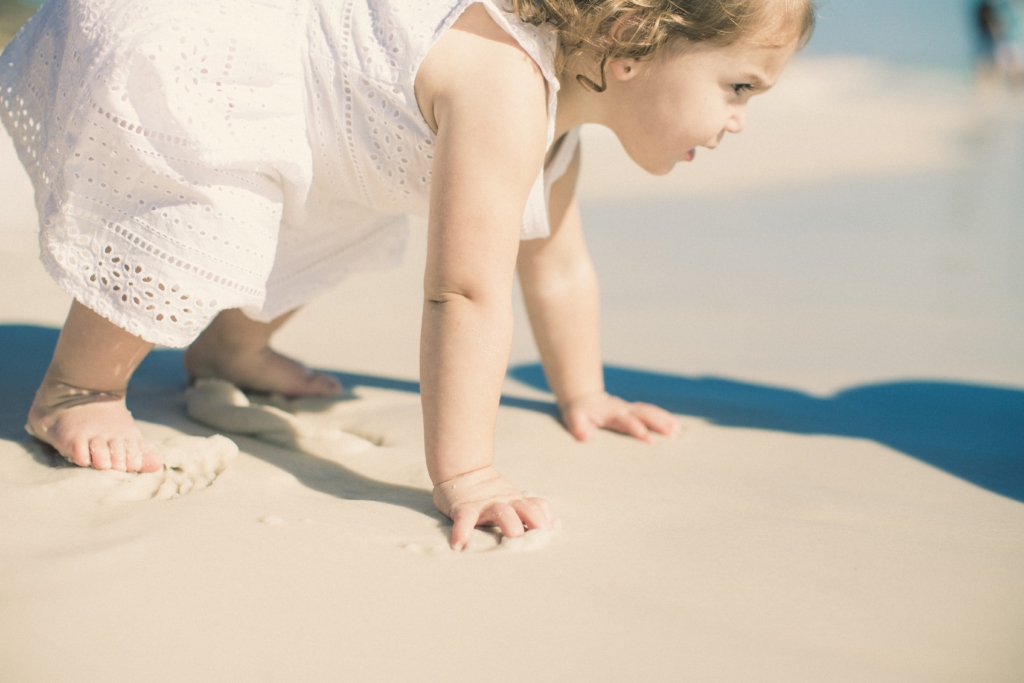We’ve all experienced failure. It can be so frustrating when you have put a lot of time into an activity, considering all the angles, and then game time comes and things do not go according to plan.
How could this happen? What did I miss?
If we aren’t careful, in the post-failure aftershock we’ll take a huge hit to our self-confidence. We can even start to question our identity… am I a failure…? In this way, failure can quickly turn into a non-resourceful spiral.
In this post, we’re going to reframe the concept of failure so that when it inevitably rears its ugly head, we can see it in a new light and maybe even appreciate it. Sound crazy? Read on…
A time before failure…
Ever met a baby? They can’t do anything.
Well, at least not anything very useful. They can cry, do the natural function things, and will usually grasp whatever comes close enough to their inarticulate little hands, but that’s about it. They can’t walk, can’t read, and are generally poor conversationalists.
Get a job, baby.
Cut to three years later and little humans are running around, babbling up a storm, and generally having much greater interactions with the world. A decade or two more, and we actually start to get good at some things.
I like to start here because it’s useful to remember that there was a time when a very tiny version of you couldn’t do even the most basic tasks. Babies model a basic process for skill-building that can be very useful for the rest of us to remember.
A formula for success…
Think of how a baby learns to walk. First, they learn to stand up. That’s no mean feat when you consider that they don’t even start with muscles, just chubby little appendages that practically demand to be nibbled (what is with that anyway? Seems evolutionarily unsound…).
They’ll practice standing near something that they can hold onto. It’s very wobbly at first. Then gradually, they start to take very shaky steps. Soon, they can move all around the table. And not long after that, we hear about their first steps on social media.
What’s that you say? I missed a part?
Oh yeah, the falling down…
If you’ve seen this process go down, you know that there is a LOT of falling before they learn to walk. The saying should really be “crawl before you fall before you walk”.
The crazy thing is that every time they fall over, they get back up and try again. Not only that, but it doesn’t even seem to bother them. They just keep trying.
They don’t get caught in analysis paralysis. They don’t wonder what everyone else is thinking about them. They don’t even question their existential value as a human being. They keep trying. And they have a 99.99999% success rate.
The vast majority of humans who CAN learn to walk, DO learn to walk. From that we can learn a formula for success:
Success = Failed Attempts + 1
Embrace the “Wobble”
I want to make a distinction here. Failure isn’t actually what we tend to think it is. Giving it a name is so definite, so final, so permanent. Failure is anything but.
It’s easy to see in the wobbly stance of that 1-year-old. An entire internal world is going on in that wobble. Not only are their leg muscles going to the gym to get stronger, but there is a corresponding strengthening of all of their neural pathways as well.
Neurons are literally growing toward one another. It’s a wobbly process.

It’s easy to see in a baby walking, but this developmental “wobble” is happening anytime you learn a new skill. Science! ![]()
Calling something a “failure” is a gross simplification for a very complex process. Start thinking about this process whenever you are labeling something failure. If you keep trying, the neural network will get stronger and stronger and soon you’ll have access to powers that you didn’t before.
This is also why book learning can be very misleading. The baby could read all the books in the world about walking (if they could read… see “get a job, baby”), and they would still never be able to walk because they wouldn’t have the requisite neural networks that develop from “failed” walking attempts during practice.
Thank god they CAN’T read those books, because then they might beat themselves up for not being able to walk, despite their deep “understanding” of it…
You Are Not Your Failure
A cool thing about infants is that they haven’t formed an identity as distinct from the world (and people) around them yet.
This is how they can wander around covered in god-only-knows what and happily present themselves to the general public. They haven’t learned to experience shame yet. How cool is that? There was a time in everyone’s personal history that we were 100% immune to feelings of shame.
As adults, we’ve typically cultivated well-developed egos, so this can seem a bit out of reach (although have you ever stopped to wonder what it might be like to be immune to shame?). However, there is a valuable distinction here, that can be applied to the failure process.
The distinction here is that there is a difference between the failure and yourself. YOU are not (could not be) a failure. You might experience failure, but you are not your experiences. You are simply the one who experiences them.
This is what enables the babies to ceaselessly practice walking because they don’t let a feeling of self-consciousness get in the way of the practice. As fully-grown self-conscious adults, this can seem a bit more challenging, but you can start by changing the language that you use about failure.
A simple shift from “I failed” to “I experienced failure” or “That attempt didn’t work” can be a lightweight way to move away from identification with failure. This is one of the uses of personal affirmations.
So as you continue to develop into the ever–greater badass that you are, remember these three lessons from the dojo of the baby ![]()
![]() :
:
- Failure only happens when you stop trying
- It takes repetitions for neurons to connect — enjoy the wobble
- Failure can’t define you

